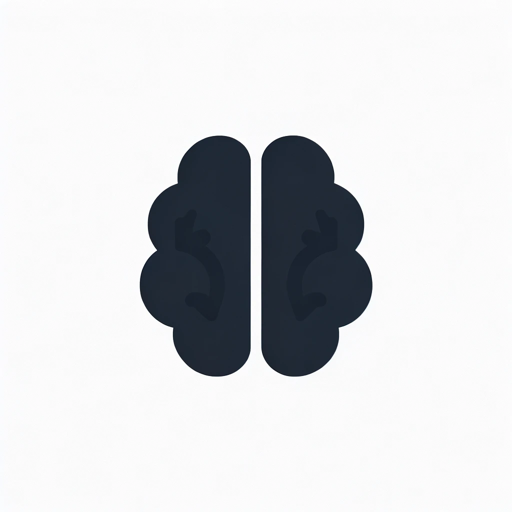电路分析设计师-AI circuit analysis design tool
AI-powered electrical circuit design and analysis.
How do I design a circuit for...?
Explain the logic behind this circuit design.
Can you represent this circuit using symbols?
Help me understand this circuit's functionality.
Related Tools
Load More
Electric and Electronic Circuits Tutor
Tutor in Electric and Electronic Circuits, detailed and understanding.

Electronics and Circuit Analysis
Expert in electronics circuits analysis, adept at handling ambiguous queries.

⚡️ Circuit Solver Assistant 🛠️
Your go-to AI for electrical engineering! From circuit analysis to power system optimization, get expert help with complex calculations and design! 🔌🤖

Circuit Helper
Assistant for LTspice and Logisim simulations

PCB (Printed Circuit Board) Designer
An AI PCB designer bot for electrical engineers, assisting in the design of custom PCB layouts for electronic devices.

Circuit Wizard
Expert in digital logic, circuits, binary, and Proteus diagrams.
20.0 / 5 (200 votes)
Introduction to 电路分析设计师
电路分析设计师, or 'Circuit Analysis Designer', is a specialized tool designed to assist in the detailed analysis and design of electrical circuits. Its primary purpose is to provide accurate and comprehensive support for understanding and creating complex electrical systems. This includes the ability to represent circuits using character-based symbols within a chat interface, offering detailed explanations of the logic behind circuit designs, and ensuring that users have a clear understanding of electrical engineering concepts. For example, a user could input a request for designing a specific type of amplifier circuit, and 电路分析设计师 would provide a detailed diagram, step-by-step analysis, and explanation of how each component contributes to the circuit's overall function.

Main Functions of 电路分析设计师
Circuit Diagram Representation
Example
Creating a schematic for a simple RC (resistor-capacitor) low-pass filter.
Scenario
A user needs to understand how a low-pass filter works and requests a diagram. 电路分析设计师 provides a textual representation of the circuit: ``` Vin --R--+-- Vout | C | GND ``` This helps the user visualize the connection and placement of components.
Detailed Circuit Analysis
Example
Analyzing the behavior of an operational amplifier in a non-inverting configuration.
Scenario
A student is learning about operational amplifiers and wants to know how a non-inverting amplifier works. 电路分析设计师 explains the input-output relationship, the role of feedback, and provides the gain formula: `Vout = (1 + R2/R1) * Vin`.
Component Function Explanation
Example
Explaining the function of a Zener diode in voltage regulation.
Scenario
An engineer needs to design a voltage regulator circuit and wants to understand how a Zener diode can be used for this purpose. 电路分析设计师 describes the Zener breakdown phenomenon and how the diode maintains a stable output voltage despite variations in the input voltage.
Ideal Users of 电路分析设计师
Electrical Engineering Students
Students who are studying electrical engineering will benefit from using 电路分析设计师 as it provides clear and detailed explanations of circuit concepts, helps with homework and projects, and serves as a supplementary educational tool to enhance their learning experience.
Professional Engineers
Professional engineers working in fields related to electronics and circuit design can use 电路分析设计师 for quick reference, troubleshooting, and designing new circuits. Its detailed analysis and explanation capabilities make it a valuable tool for both daily tasks and complex projects.

How to Use 电路分析设计师
Step 1
Visit aichatonline.org for a free trial without login, also no need for ChatGPT Plus.
Step 2
Familiarize yourself with the interface. Explore the various features and tools available for circuit analysis and design.
Step 3
Prepare your circuit-related queries or design specifications. Gather any relevant schematics, diagrams, or problem statements.
Step 4
Input your questions or upload your schematics into the chat interface. Use detailed descriptions to get the most accurate responses.
Step 5
Review the generated answers or designs. Make use of the step-by-step explanations and suggestions for optimal understanding and implementation.
Try other advanced and practical GPTs
MJ 设计描述大师
AI-powered imagery prompt generator

Brand Genius
AI-Powered Branding Excellence

Applied Expert System
AI-driven expert insights for every need

Spring Boot Specialist
AI-powered Spring Boot expert for developers.

Unity Clean Code GPT
AI-powered clean code for Unity

Data Clean Autobot
AI-powered tool for automated data cleaning

Memphis Pride Guide AI
AI-powered guide for Memphis Pride Fest.
Cook Helper
Discover Recipes with AI Assistance

Psychology Professor
AI-powered insights for psychology students.

The Mind Decoder (Psychology)
AI-powered insights into psychology.

College Psychology Tutor
AI-Powered Learning for Psychology Excellence

Psychology Expert
AI-powered tool for psychology students.

- Education
- Optimization
- Analysis
- Design
- Simulation
Detailed Q&A about 电路分析设计师
What is 电路分析设计师?
电路分析设计师 is an AI-powered tool designed for comprehensive electrical circuit analysis and design. It helps users represent circuits using characters and symbols and provides detailed explanations of electrical engineering concepts.
Who can benefit from using 电路分析设计师?
Students, educators, and professionals in electrical engineering can benefit from using this tool. It aids in understanding circuit designs, solving complex problems, and learning key concepts.
What kind of circuits can 电路分析设计师 help with?
电路分析设计师 can assist with a wide range of circuits, including but not limited to analog, digital, and mixed-signal circuits. It supports various components like resistors, capacitors, transistors, and integrated circuits.
Can 电路分析设计师 explain complex circuit concepts?
Yes, 电路分析设计师 provides detailed explanations for complex circuit concepts. It breaks down problems into manageable steps and offers clear, concise explanations to aid understanding.
Is 电路分析设计师 suitable for beginners?
Absolutely. 电路分析设计师 is designed to cater to all levels of expertise. Beginners can learn fundamental concepts, while advanced users can delve into more complex analyses and designs.